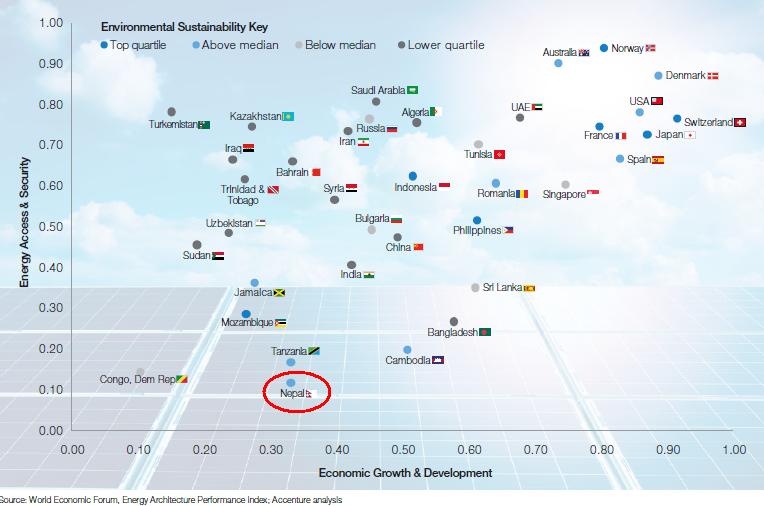The
blog post about changes in minimum wages in South Asia and the rapid rise in wages in Nepal, which meant that we might not have comparative advantage in labor cost, created quite an interest among readers. The wages (monthly minimum wage in US$) was for manufacturing sector only. In this blog post I am presenting further analysis, based on the latest
ILO Global Wage Report 2012-13, using national level monthly minimum wage data. At the outset, note that labor productivity in Nepal appears to be decreasing (see this
blog post for more).
The figure below shows that up until 2005, Nepal had the second lowest minimum wage (US$33.54 per month) in South Asia. In 2006, it increased by 35.21%, the highest increase than any other South Asian country, to reach US$45.36 per month. As of 2011, Nepal has the highest minimum wage in South Asia (US$83.76 per month), followed by Pakistan (US$82.17 per month), India (US$ 64.07 per month), Sri Lanka (US$51.22 per month), and Bangladesh (US$40.46 per month)—and which partially explains the increasing manufacturing sector investment in Bangladesh (also dubbed as the
next RMG sourcing hotspot by McKinsey).

Regarding the growth rate of minimum wages, Nepal had the largest average growth (2006-2011) both in dollar and local currency terms. Bangladesh and Sri Lanka are taken out of the picture because of lack of full data for the period mentioned above. The average monthly minimum wage (2006-2011) in Nepal increased by 17.77% in dollars and by 18.67% in local currency. For comparative purpose, I have used official exchange rate (local currency unit per US$, period average) to convert local currency wages into US$. The currency movement makes a difference in sales and profits, which will then, to some extent, influence investment or expansion decisions (depreciation along with strong domestic and overseas demand is normally good). Here the minimum wage for Bangladesh corresponds to that of garment sector; overall private sector for India, Nepal and Pakistan; and manufacturing sector for Sri Lanka. All minimum wage data refer to that of unskilled workers in non-agriculture enterprises.

With regard to real wage (in local currency), on average between 2006 and 2011, Nepal had the highest growth rate (of 5.3%), followed by Bangladesh 3.1% and Pakistan, 2.1% (India and Sri Lanka had negative real wage growth).

Furthermore, the
nominal mean daily wage has increased by 127% and 98% in agriculture and non-agriculture sectors, respectively, between 2003/04 and 2010/11 (i.e., between the two household surveys).

Well, in one of the aspects crucial for new investment or expansion of existing investment, Nepal is already at the losing end [Note that, higher wages are not bad in itself as long as they are matched by rise in productivity]. It is further amplified by long hours of power cuts, political instability, excessive labor unionism, low productivity, infrastructural bottlenecks (inadequate and uneven supply of roads, water supply, etc.) and policy unpredictability as well as paralysis. Against this backdrop, enticing investment in manufacturing sector is a daunting challenge.
Due to high focus on energy and transport (the above listed investment hiccups are less persistent in these sectors) and attractive incentives, foreign investors have planned for sizable investments in key sectors. However, these won’t immediately boost employment and spur economic activities, except for construction sector workers and construction materials produced domestically, throughout the 15 sectors that make up the GDP. With the relaxation of the most binding constraint, i.e. energy shortage, almost all sectors are expected to experience better economic activities. Until then the challenge is to entice investments in other sectors as well. For this the resolvable constraints have to be resolved with decisive political will (like labor issues, skills upgradation, targeted application of import tariffs—eg. agriculture inputs are taxed more than final product) in order to boost efficiency and productivity. The pressing needs are to achieve higher economic growth, generate enough employment opportunities and institutionalize inclusive growth and development activities without negatively impacting efficiency, competitiveness and productivity.










